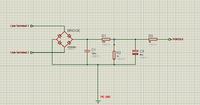- Joined
- Jul 4, 2009
- Messages
- 16,236
- Helped
- 5,140
- Reputation
- 10,309
- Reaction score
- 5,121
- Trophy points
- 1,393
- Location
- Aberdyfi, West Wales, UK
- Activity points
- 137,404
So be it! I hope they have a plentiful source of PICs - and a forgiving telco - and wear insulated shoes while working on it :lol:
Brad - the power source is a telephone line, not 50/60Hz mains AC.
Brian.
Brad - the power source is a telephone line, not 50/60Hz mains AC.
Brian.
